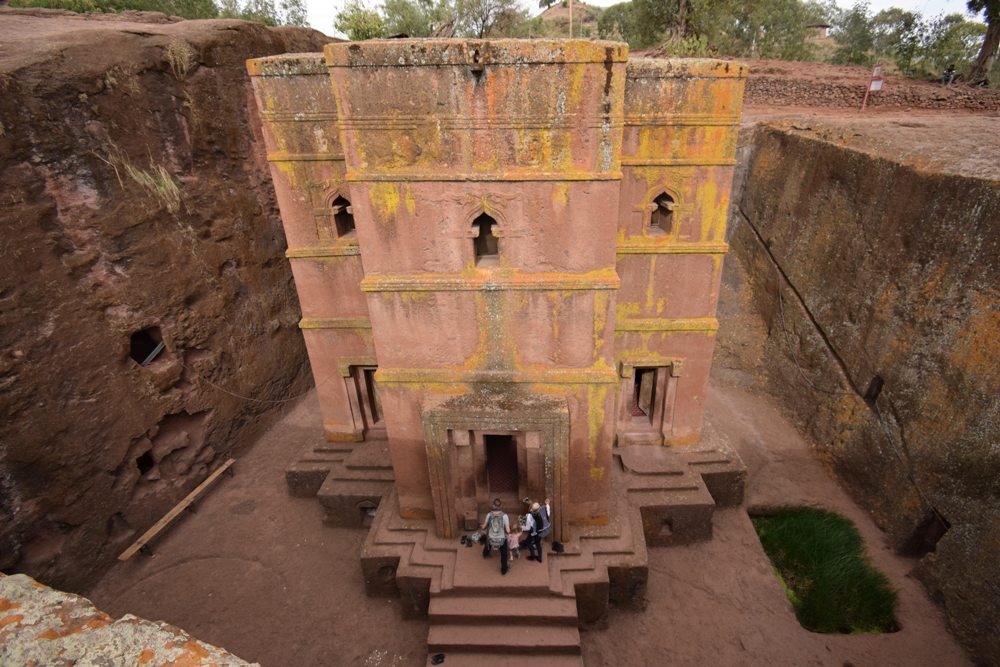
Lalibela, a city tucked away in the Ethiopian highlands, is an enigmatic testament to faith, perseverance, and human ingenuity. As one steps into this ancient city, the harmonious blend of nature, spirituality, and architecture becomes palpable. Often referred to as the Eighth Wonder of the World,
Lalibela's rock-hewn churches draw countless pilgrims and tourists every year. On Exoticca trips to Ethiopia, one of the most awe-inspiring sights to witness is the cluster of churches in Lalibela. Unlike traditional buildings constructed atop land, these churches were meticulously carved out of solid rock. Their origin dates back to the late 12th and early 13th centuries under the rule of King Lalibela, who envisioned a 'New Jerusalem' for those unable to make the pilgrimage to the Holy Land. The churches are not only marvels of engineering but are living examples of the profound spiritual heritage of Ethiopia.
The Layout and Symbolism
The churches of Lalibela are laid out symbolically. They're organized in two main clusters, representing both earthly and heavenly Jerusalem. Crossing from one cluster to another symbolizes moving from the earthly realm to the heavenly, emphasizing the journey of the soul from mortal life to eternal salvation. The River Jordan, a trench filled with water, divides the two clusters and serves as a representation of baptism and rebirth.
Bete Giyorgis (St. George's Church)
Perhaps the most iconic of all the churches in Lalibela is the Bete Giyorgis. Carved in the shape of a cross, it stands as an isolated monolithic structure. Legend has it that King Lalibela received a vision from St. George, chastising him for not dedicating a church in his honor. In response, the king built the most magnificent of all the churches. The precision with which this structure is carved out of the bedrock makes it a must-visit.
The Mystical Tunnels and Passageways
The churches are interconnected through a series of dark, narrow tunnels. These tunnels serve not just as passageways but as symbolic routes for spiritual enlightenment. Navigating through them signifies the path of penance and the subsequent emergence into light and truth.
The Pilgrims' Faith and Devotion
Despite being a major tourist attraction, Lalibela remains an active spiritual site. Every year, thousands of Christian pilgrims flock here, especially during the Ethiopian Orthodox Christmas celebrations. Their fervent devotion, rhythmic chants, and soulful prayers add to the sanctity and ambiance of the place, making the experience even more profound.
Art And Inscriptions: Stories Set In Stone
The walls of these churches narrate tales of faith, folklore, and history through intricate carvings and inscriptions. Each depiction, whether it's of biblical stories or Ethiopian saints, is an artistic masterpiece. These art pieces provide invaluable insights into the religious and cultural life of the period.
Preservation and World Recognition
Recognizing the historical, cultural, and spiritual significance of Lalibela, UNESCO designated it as a World Heritage Site in 1978. Conservation efforts are in place to ensure that the erosion, which threatens the existence of these monuments, is minimized, and the legacy of Lalibela remains intact for future generations.
Lalibela is more than just a historical site or a religious center; it's a journey that transcends time. Each church, tunnel, and carving tells tales of faith, human resilience, and the undying spirit of a civilization.To visit Lalibela is to step into another world, one where the spiritual and earthly realms intertwine seamlessly. For those seeking a deeper connection with history, faith, or simply marveling at human ingenuity, Lalibela promises an experience unparalleled. In the heart of Ethiopia, these rock-hewn wonders await, timeless in their beauty and spirit.
EDITORIAL POLICY
The Flash List is dedicated to providing trustworthy editorial content by maintaining strict ethical standards, journalistic integrity, and credible professionalism regardless of any remuneration as working media. The Flash List is not affiliated with third-party companies mentioned and makes no endorsement or guarantee expressed or implied. The preceding article, which contains affiliated link(s) for which compensation was received, is intended for informational reference only and does not constitute advice of any kind. Moreover, a qualified professional should be consulted regarding any lifestyle consideration, medical treatment, or monetary transaction, etc. Content is published in accordance with USFTC regulations and terms and conditions.
MORE ON THE FLASH LIST
































